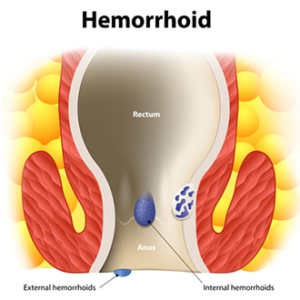Overview of Wolff-Parkinson-White Syndrome (WPW)
Understanding Wolff-Parkinson-White Syndrome (WPW)
Estimated Reading Time: 6 Minutes
Wolff-Parkinson-White syndrome (WPW) is a congenital heart condition that increases the risk of abnormal heart rhythms, also known as arrhythmias. Individuals born with WPW often display specific markers on their electrocardiogram (ECG) and commonly develop supraventricular tachycardia (SVT), a rapid heartbeat that can cause palpitations, dizziness, and fatigue. In more severe cases, WPW may lead to life-threatening forms of arrhythmia.
What Exactly Is WPW?
WPW occurs when an individual is born with an abnormal electrical connection between the upper chambers (atria) and lower chambers (ventricles) of the heart. These extra connections, called accessory pathways, bypass the usual route that electrical signals follow. As a result, they can create electrical circuits that promote the onset of irregular heart rhythms.
The Role of Accessory Pathways in WPW
Accessory pathways are critical because they offer an additional route for electrical impulses to travel between the atria and ventricles. This abnormal route allows the heart’s electrical signal to circulate in a loop, contributing to reentrant tachycardias such as atrioventricular reciprocating tachycardia (AVRT). In this condition, the signal travels down the normal AV node pathway and returns via the accessory pathway, repeating the cycle and causing the heart to beat rapidly.
What Sets WPW Apart from Typical AVRT?
In standard AVRT, the accessory pathway generally only conducts impulses in one direction—from the ventricles back to the atria. However, in WPW, these pathways can conduct signals in both directions, from atria to ventricles and vice versa. This bi-directional conduction makes the electrical loop more robust and sustains the rapid rhythm more easily, leading to persistent episodes of SVT.
Why WPW Is Considered High Risk
1. ECG Clues: The Delta Wave
In patients with WPW, the presence of a delta wave—a slurred upstroke in the QRS complex on an ECG—can signal early activation of the ventricles via the accessory pathway. This helps clinicians diagnose WPW accurately.
2. Misdiagnosis Risks
During an arrhythmia, the QRS complex may appear wide and unusual, potentially mimicking ventricular tachycardia (VT). This resemblance can confuse healthcare providers and lead to incorrect treatment unless WPW is properly identified.
3. Dangerous Response to Atrial Fibrillation
If someone with WPW develops atrial fibrillation (AF), the accessory pathway can conduct the chaotic signals rapidly to the ventricles, bypassing the protective filter of the AV node. This can result in extremely fast and potentially fatal heart rates.
Recognizing Symptoms of WPW
People with WPW-induced SVT often experience symptoms such as:
-
Rapid or pounding heartbeats (palpitations)
-
Dizziness or lightheadedness
-
Unusual tiredness or fatigue
Episodes may last from a few minutes to several hours. In rare cases, if atrial fibrillation or flutter occurs and is conducted through the accessory pathway, it can cause ventricular fibrillation, leading to fainting or sudden cardiac arrest.
Treatment Options for WPW
Vagal Maneuvers for Temporary Relief
Some patients can interrupt their SVT episodes by stimulating the vagus nerve, which controls heart rate. Techniques like the Valsalva maneuver or face immersion in cold water can sometimes help slow the heart temporarily.
Radiofrequency Ablation: A Long-Term Solution
For most people with WPW, the preferred treatment is catheter ablation. This minimally invasive procedure involves identifying and destroying the accessory pathway using radiofrequency energy. Ablation has a high success rate (over 95%) and is especially recommended for:
-
Patients with frequent or severe symptoms
-
Individuals at risk of atrial fibrillation
-
Even asymptomatic patients, depending on risk factors
Expert Insight: When to Consider Ablation Even Without Symptoms
Atrial fibrillation is more common in those with WPW, and even if no symptoms are present, ablation may be advised to prevent dangerous heart rhythms in the future. Consultation with a cardiologist or electrophysiologist is essential to assess the need for preventive treatment.
Conclusion
Wolff-Parkinson-White syndrome is a congenital abnormality that disrupts the heart’s electrical system and increases the risk of dangerous arrhythmias. Timely diagnosis, lifestyle adjustments, and advanced treatments like ablation can help manage the condition effectively. Individuals diagnosed with WPW should work closely with a cardiologist to determine the best course of action.



